Building the Coalition
With key partners engaged in this new collective impact effort, the work to end homelessness in Silicon Valley began in earnest. During this time, the coalition conducted research, established clear objectives and metrics, and launched a few key initiatives that would lay the foundation for ongoing collaboration and future success.
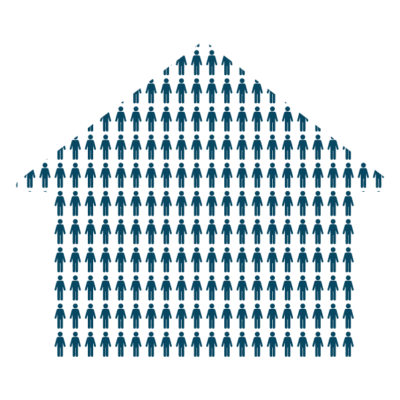
Housing 1000 Campaign
In 2011, the coalition launched Housing 1000, a three-year campaign to house 1,000 community members who were experiencing chronic homelessness (inspired by the national “100,000 Homes Campaign”).
The Housing 1000 campaign embraced the Housing First approach and brought together a variety of partners to assist these extremely in need community members. The coalition started by organizing a large volunteer force to conduct a survey of homeless encampments and create a registry of thousands of homeless individuals in need of assistance. Then, a few key partners stepped up to provide funding to connect these people to housing. The County of Santa Clara provided funding housing subsidies and the Santa Clara County Housing Authority agreed to allocate federal housing vouchers for the people most in need on the registry. In addition, Destination: Home funded three nonprofit organizations to provide intensive case management, as well as a coordinating partner to both manage the referral process as well as set and track metrics that would help spur the campaign in more effective directions.
By the end of the campaign, 850 chronically homeless individuals transitioned into permanent housing and 83% remained stably housed – dispelling the misconception that chronically homeless individuals could not successfully remain in permanent housing. This validation led the Santa Clara County Continuum of Care to formally commit to a Housing First approach and provided an early sign of the potential of the emerging collective impact model.

“Home Not Found” Cost Study
While the growing community impacts of homelessness were clear, stakeholders across the community still did not have a clear picture of the full cost of this crisis.
Accordingly, in 2015, a cost study was commissioned by Destination: Home and funded by the County of Santa Clara, resulting in a report titled “Home Not Found: The Cost of Homelessness in Silicon Valley.” This study was the largest and most comprehensive body of information assembled in the U.S. to analyze the public costs of homelessness.
Researchers looked at more than 104,000 homeless individuals who had interacted with a County agency at some point between 2007 and 2012. This study revealed a startling fact: the County of Santa Clara was spending a staggering $520 million each year responding to the needs of homeless residents without actually resolving their homelessness. The majority of these costs were in the healthcare system (including outpatient care, emergency room visits, mental health services) and researchers also found that these costs were heavily skewed toward a relatively small group of high-need individuals.
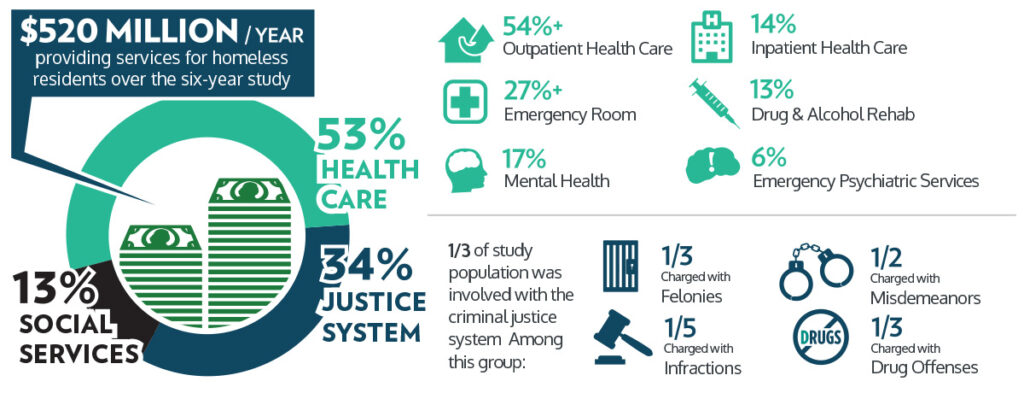
“Home Not Found” also shed light on the potential cost savings associated with expanding a Housing First approach, specifically for chronically homeless people.
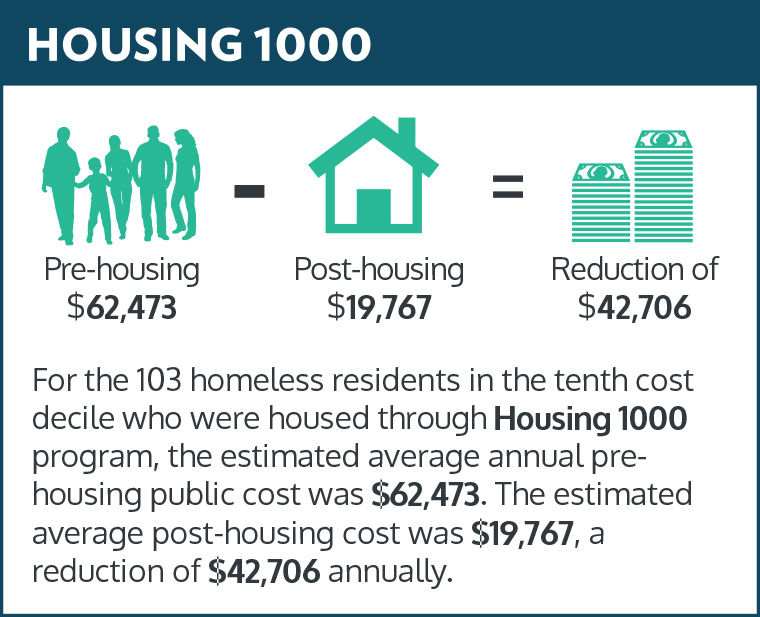
For example, looking at a subset of individuals housed through the Housing 1000 campaign (those with the highest usage of public services), the results were striking. While they were homeless, the County provided $62,473 in average annual support services for each individual that did not solve their fundamental need for housing. However, once these individuals were housed, the County’s average annual expenses per person dropped dramatically to $19,767 – a reduced cost to taxpayers of $42,706 per person per year. While these amounts may differ across other demographics, they are indicative of the potential for cost savings via a Housing First approach.
By putting clear dollar amounts on the costs of homelessness versus the cost of housing, “Home Not Found” underscored the limitations of treating only the symptoms of homelessness, and also undercut many common objections to spending money on building more affordable housing options.

The 2015-2020 Community Plan to End Homelessness
While various partners collaborated on the Housing 1000 campaign, the coalition recognized that sustained collective impact would require building a common agenda and shared systems for implementation and measurement. Accordingly, throughout 2014, the coalition convened a series of community summits, attended by dozens of stakeholders and interested community groups, with the objective of creating a unified plan.
All the nonprofits that were involved, all the governmental officials that were involved, we were sitting around a table together. We knew there was a better way than people languishing in shelters and dying, and we just had to keep pushing. The idea was if the sectors can move together, we’ll be harder to break apart.
Jennifer Loving, CEO, Destination: Home
By this point, key partners within the coalition were already seeing the initial results of efforts to get people off the streets and into homes. A core group of leaders had developed trusting relationships and a readiness to build on the successes of the model so far. With HomeBase as a facilitator, discussions revolved around how to embed robust Housing First strategies across the Continuum of Care.
The result of these consultations was the first collaboratively-developed Community Plan to End Homelessness (2015-2020), a shared roadmap for government, nonprofits, and other stakeholders to make decisions about funding, programs, and priorities, and which was structured around three central strategies:

Disrupt the System
Recognizing the shortcomings of the existing Continuum of Care, the coalition agreed to overhaul the existing systems and reshape government responses to homelessness. This included coordinating resources and funding across the region, responding to system barriers and service gaps, and increasing service provider capacity. Partners also committed to including the private sector and broader community in developing and funding solutions.

Build the Solution
With limited supply of affordable housing solutions available, the plan set an ambitious goal of creating 6,000 housing opportunities (including housing units and rental subsidies) by 2020. It also called for allocating funds for vital supportive services to complement these new housing opportunities and connect tenants to resources that would help them stay housed.

Serve the Person
Acknowledging the diverse spectrum of needs within the homeless population, the plan committed partners to client-centered strategies, with different responses depending on needs. This included rapid rehousing resources to address brief experiences of homelessness, services targeted at chronic homelessness and homelessness prevention, and strategies to meet the distinct needs of different populations, such as homeless veterans, youth, and people with disabilities.
Importantly, the plan emphasized permanent housing solutions and incorporated key objectives, measurable metrics, and a commitment to accountability. To help implement the new plan, the County of Santa Clara created a specialized department, the Office of Supportive Housing (OSH) to help coordinate the County’s efforts and manage data collection and countywide outcomes via the Homeless Management Information System (HMIS). Half of the initial funding to hire a director for OSH was provided by Destination: Home.
To generate buy-in that would be crucial at the implementation stage, the coalition also invited and secured endorsements from cities across Santa Clara County, bringing more entities into this growing collective impact model.
Overall, the new Community Plan to End Homelessness was an important milestone that represented the community uniting in its commitment to deploy proven solutions against a seemingly intractable challenge. And this new plan would serve as the foundation for the coalition’s next key phase of work.
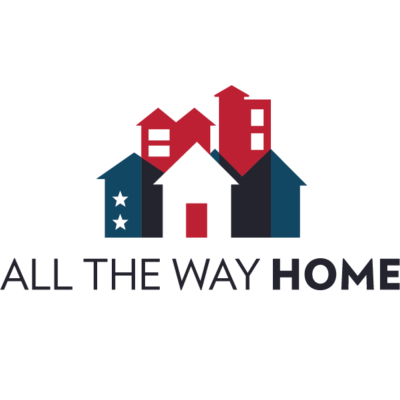
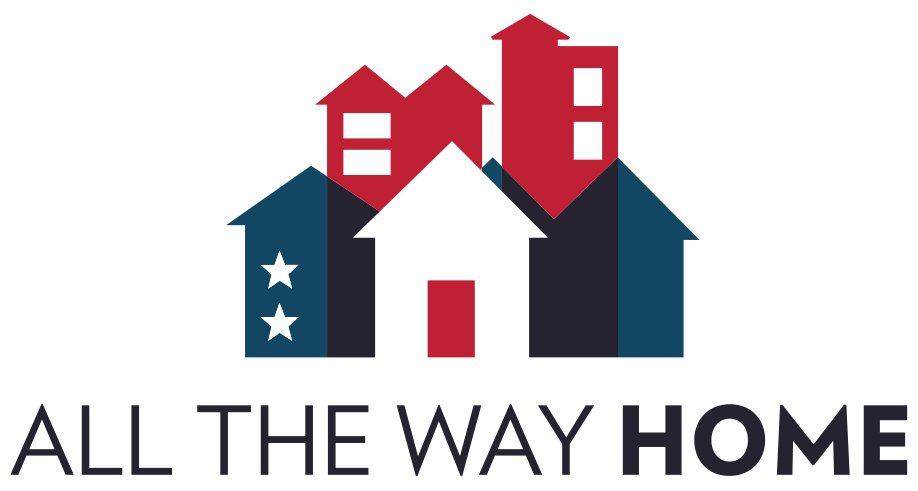
A clear priority identified through the Community Plan to End Homelessness was the need to serve distinct groups of homeless individuals that have distinct needs. For example, U.S. military veterans are at increased risk for homelessness, and are more likely to live on the street than in shelters, often for extended periods of time. Recognizing this, First Lady Michelle Obama launched a nationwide campaign in 2014 to mobilize mayors and local officials to end veteran homelessness.
On Veterans Day in 2015, Destination: Home, the County of Santa Clara and the City of San Jose convened a broad coalition to launch All the Way Home, a campaign to end veteran homelessness in Santa Clara County. Through this campaign, a wide array of partners came together to deploy a variety of strategies that have helped reduce veteran homelessness in Santa Clara County:
- The Santa Clara County Housing Authority helped secure and administer 400 additional federal housing vouchers to help homeless veterans pay for housing;
- The County of Santa Clara and City of San Jose allocated millions of dollars for housing support, services and to create financial incentives for landlords to rent to homeless veterans
- A coalition of nonprofits, including HomeFirst, Goodwill, and the Veteran Resource Center, worked closely with the local VA office to manage a “by-name” list of homeless veterans and connect them to housing, supportive services, and employment opportunities
- The Health Trust, the Phoenix and other dedicated volunteers helped coordinate move-in kits so Vets could move into their new homes with dignity.
RESULTS
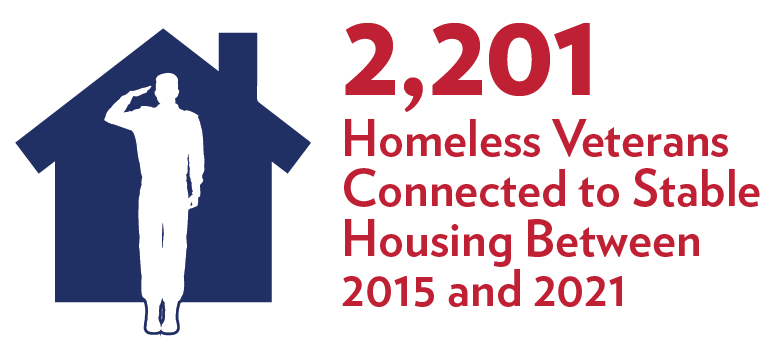
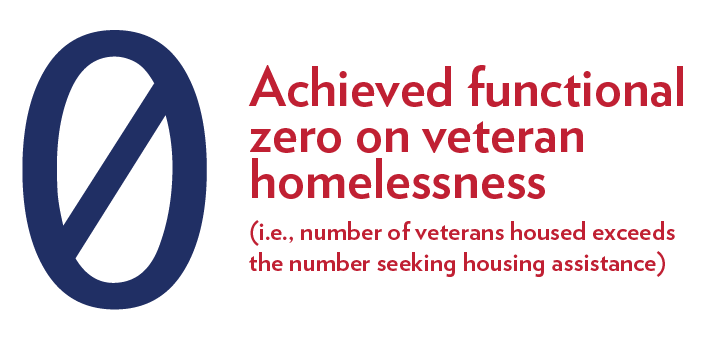
Key Elements for Successful Coalition Building
“Coalition” is a deceptively simple word. Reams of research, case studies, even university courses are dedicated to the art of building a coalition, because forming a solid, sustained partnership around a common agenda is extremely hard work. What’s more, each coalition looks different—with varying stakeholders, priorities, power dynamics, and decision-making structures.
Collective impact starts from the assumption that working together is more effective than working alone. So how do you bring together groups with different perspectives, agendas, and resources and convince them to move in a shared direction? In this collective impact model, several elements were critical to building a functional coalition:

Moral Leadership

Moral Leadership
At the heart of this coalition is a goal to house the most in need people in the community. That requires unwavering commitment to prioritizing housing for people with the lowest incomes and highest needs —which is the most difficult, expensive, and impactful housing strategy. A combination of political will and moral leadership was key to building buy-in around this bold commitment, despite the costs and potential blowback.

Constant Communication

Constant Communication
Ongoing communication among partners is necessary to share ideas, analyze gaps, identify resources, and move this important, but difficult work forward. Destination: Home was established with a mandate to convene diverse stakeholders and facilitate regular, ongoing communication among partners. In this coalition, key stakeholders – at all levels within an organization – meet regularly to foster collaboration, and representatives from across the system have seats on Destination: Home’s Board of Directors, where they help guide collective impact strategies. This type of regular communication between stakeholders has also built personal relationships grounded in trust—which is especially useful when conflict or disagreements occur.

Robust Data

Robust Data
In order to rally entities around a common agenda, you need to understand what’s currently working and what’s not. Early on, partners conducted a cost study that quantified spending on homeless support services and projected cost savings of building permanent supportive housing. Coalition partners also committed to utilizing and investing in the shared Homeless Management Information System (HMIS), regularly collecting, analyzing and reporting to inform and improve their collective efforts. Basing decisions on this type of robust data is critical to both securing buy-in and forging a shared path forward.

Transparency

Transparency
Through the Community Plan to End Homelessness, coalition partners agreed on shared, outcome-based metrics. To measure progress, the County produces and shares reports based on data collected through HMIS. This transparent data collection and sharing ensures partners are more aligned about where to allocate resources.

Unified System

Unified System
From developing the Community Plan to End Homelessness to launching new systems for homelessness prevention and data management, a major part of this coalition building has been to shift from a fragmented system to a unified one. Partners are agreed not only on five-year goals, but also on the roles that each plays in moving the system forward.

Aligning Funding for Results

Aligning Funding for Results
In order to make meaningful progress, all partners in a coalition must be committed to putting some of their skin in the game in support of their shared goals. In this coalition, the collective work was catalyzed by the City of San Jose and County of Santa Clara both shifting dollars to implementing a Housing First approach and supporting housing solutions for the most at-risk residents. While modest in size, these initial funding commitments were key to pushing the broader ecosystem in a new direction, while also securing some early wins and building momentum. In fact, these early actions to align funding for greater impact set the table for securing and deploying approximately $2 billion in new public and private funding behind this collective effort.

Willingness to Broaden the Circle

Willingness to Broaden the Circle
As this coalition has evolved, it has benefited from the introduction of new partners. Stakeholders from the private sector, philanthropy, and those with lived experience of homelessness have strengthened the coalition with their unique perspectives and resources.
No coalition is without conflict, but the elements above can help stakeholders align their priorities, build trusting relationships, and allocate resources for the greater good.
